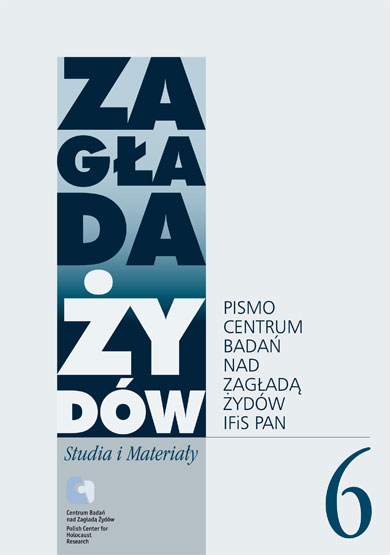No. 6 (2010)
The subject matter of this volume of the scholarly journal of the Polish Center for Holocaust Research revolves around several main themes, the most important of which is the subject matter of the instrumentalization of the Holocaust and ‘Holocaust kitsch’. Trying to paint a most complete picture possible, the texts making up this volume discuss various forms of kitsch filtering into the representations of the Holocaust in art, film, literature, and, last but not least, television. This reflection is relatively well-rooted in the contemporary humanities. The subject matter of the broadly-defined abuses in the journalistic, literary, and artistic representation of the Holocaust has been an object of brilliant and at the same time bitter analyses of the form of the presence of this experience in the public space. They reveal the phenomenon of the McDonaldization of the Holocaust, which is spreading like cancer, its political instrumentalization, ideological manipulation and commercialization. This tendency is manifested in the spheres of culture intended as high culture — in museums, film, theatre, literature, as well as in pop culture, television, and the Internet.
 English
English
 Język Polski
Język Polski



